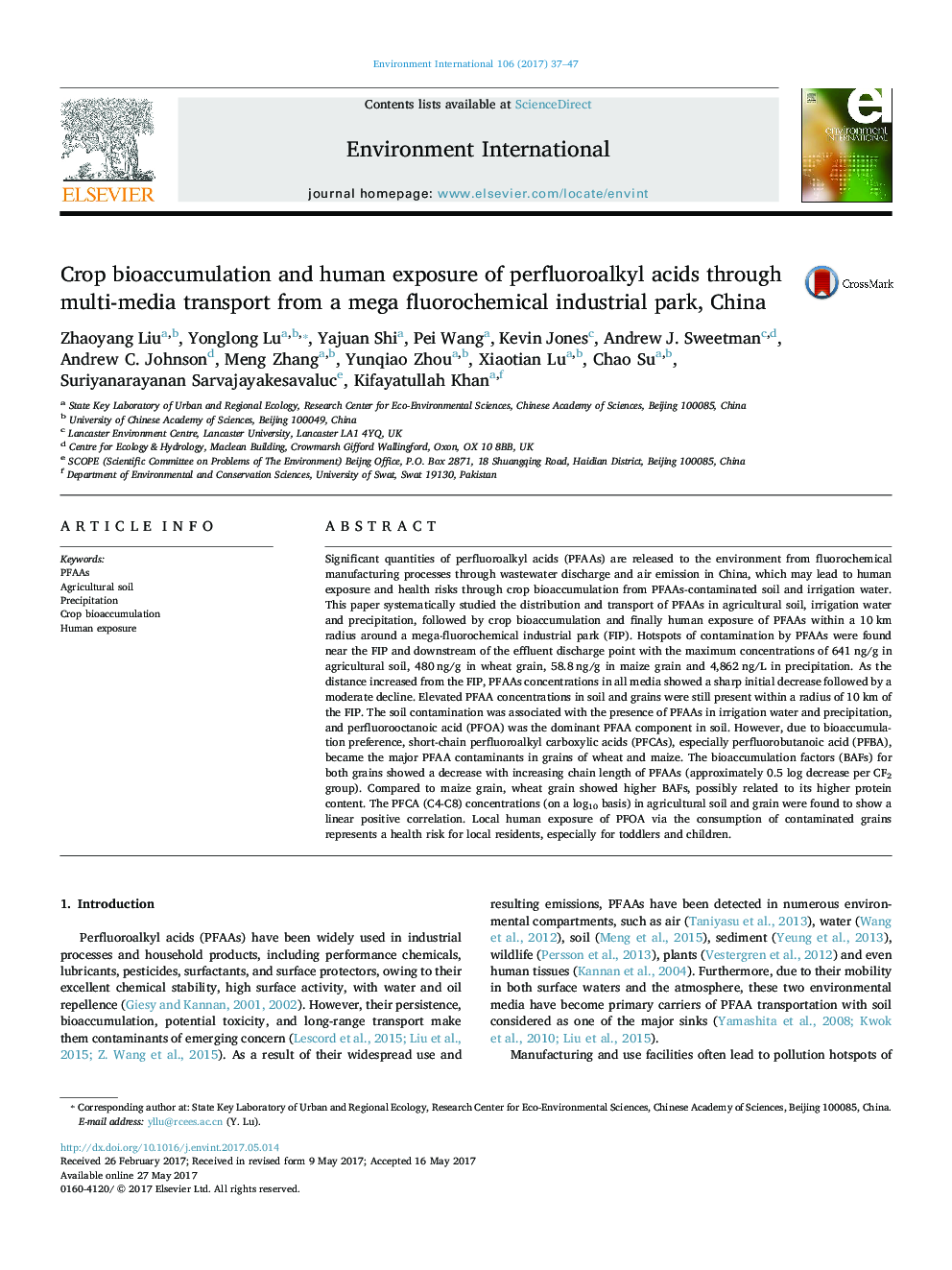| کد مقاله | کد نشریه | سال انتشار | مقاله انگلیسی | نسخه تمام متن |
|---|---|---|---|---|
| 5748372 | 1619024 | 2017 | 11 صفحه PDF | دانلود رایگان |
- Industrial emission caused pollution hotspots of PFAAs in surrounding multi-media.
- Irrigation water and precipitation were two major sources of PFAAs in farmland soil.
- Wheat and maize grain showed bioaccumulation preference for shorter-chained PFAAs.
- Soil concentration of PFAAs were an important effect factor on grain bioaccumulation.
- Consumption of polluted grains may cause health risk of PFOA for local residents.
Significant quantities of perfluoroalkyl acids (PFAAs) are released to the environment from fluorochemical manufacturing processes through wastewater discharge and air emission in China, which may lead to human exposure and health risks through crop bioaccumulation from PFAAs-contaminated soil and irrigation water. This paper systematically studied the distribution and transport of PFAAs in agricultural soil, irrigation water and precipitation, followed by crop bioaccumulation and finally human exposure of PFAAs within a 10Â km radius around a mega-fluorochemical industrial park (FIP). Hotspots of contamination by PFAAs were found near the FIP and downstream of the effluent discharge point with the maximum concentrations of 641Â ng/g in agricultural soil, 480Â ng/g in wheat grain, 58.8Â ng/g in maize grain and 4,862Â ng/L in precipitation. As the distance increased from the FIP, PFAAs concentrations in all media showed a sharp initial decrease followed by a moderate decline. Elevated PFAA concentrations in soil and grains were still present within a radius of 10 km of the FIP. The soil contamination was associated with the presence of PFAAs in irrigation water and precipitation, and perfluorooctanoic acid (PFOA) was the dominant PFAA component in soil. However, due to bioaccumulation preference, short-chain perfluoroalkyl carboxylic acids (PFCAs), especially perfluorobutanoic acid (PFBA), became the major PFAA contaminants in grains of wheat and maize. The bioaccumulation factors (BAFs) for both grains showed a decrease with increasing chain length of PFAAs (approximately 0.5 log decrease per CF2 group). Compared to maize grain, wheat grain showed higher BAFs, possibly related to its higher protein content. The PFCA (C4-C8) concentrations (on a log10 basis) in agricultural soil and grain were found to show a linear positive correlation. Local human exposure of PFOA via the consumption of contaminated grains represents a health risk for local residents, especially for toddlers and children.
347
Journal: Environment International - Volume 106, September 2017, Pages 37-47
